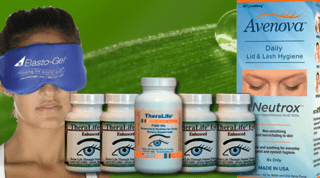Dry eyes can often cause serious and painful symptoms for the elderly.
As eyelid blinkers are used tear forms on the retina.
Tear provides lubricity, prevents eye infections, removes foreign materials and maintains the surface of the eyes clean.
Excess tears flow through eyelids and ear canals that drain to the back of the eyelid.
Dry eye can occur in cases of lack of proper tears.
Overview
Dry eye syndrome can occur when tears cannot lubricate the eyes properly or provide lubricant.
Tears are insufficient or fragile due to a variety of factors that are not fully understood.
Dry eyes are caused by a lack of tear or poor quality tears.
This tear instability causes irritation on the eyes surfaces.
Wet eyes can cause stinging and irritation- it could be painful.
Treatment of dry eye can increase your comfort level.
Dry eye symptoms
A person suffering from dry eyes could experience irritated, smoky eyes and dry eyes.
People with dry eyes may experience redness, stinging, or a gritty sensation; irritated, gritty, scratchy, sandy or burning sensation on the eye surface; a feeling of something in their eyes; excess watering; and blurred vision.
Other eye discomfort Blurred vision Eye redness that progresses through the day.
Causes
Dry eye is a condition that occurs when tears cannot properly lubricate the eyes.
This is caused by either a decreased tear production or an increase in tear evaporation.
If not treated, dry eye can cause lasting damage to the corneal surface and declining vision.
If you have dry eye, you may experience redness, stinging, or a gritty sensation in your eyes.
Dry eye can be temporary or chronic.
It occurs when your tear glands don’t produce enough tears or when your tears evaporate too quickly.
Dry eyes can cause several problems, affecting the health of tear film.
Your tear film contains 3 layers of mucous and fatty oils.
These combined substances help to maintain a smooth and clean cornea.
Causes of tear film problems range widely from hormonal changes to allergic eye diseases and even allergies.
In many people, dry eyes are caused by reduced tear production or evaporation.
If another health condition is causing your dry eye, treating that condition may improve your dry eye symptoms.
The majority of patients with dry eye have chronic inflammation (swelling) in the tear glands (lacrimal glands) that line the eyelid and in the conjunctiva (the thin lining on the inside of the eyelids and the front part of the eye).
Just like inflammation in a knee, lungs or liver, this chronic inflammation can permanently damage the tear gland tissue to the point that treatment becomes difficult.
Menopause
Other causes include: The natural aging process, especially menopause
Computer screen
Failure to blink regularly, such as when staring at a computer screen for long periods of time, can also contribute to drying of the eyes.
Contact lenses
Long-term use can be a factor in the development of dry eyes.
LASIK
Refractive eye surgeries , such as LASIK, can decrease tear production and contribute to dry eyes.
Autoimmune diseases
People with rheumatoid arthritis, diabetes, and thyroid problems are more likely to have symptoms of dry eyes.
Insufficient tear production is often associated with an autoimmune or inflammatory systemic condition such as Sjögren’s , sarcoidosis , lupus or rheumatoid arthritis , which can damage the tear glands.
If you have ocular rosacea associated with dry eye, then newer artificial tears contain lipid to help prevent tear evaporation.
When a patient has both dry eye and ocular rosacea, not only does he or she produce too few tears, but the tears that are made evaporate too quickly.
Environment
Environmental conditions, such as wind and dry climates, can also decrease tear volume due to increased tear evaporation.
When the normal amount of tear production decreases or tears evaporate too quickly from the eyes, symptoms of dry eye can develop.
Medications
Certain medicines, including antihistamines, decongestants, blood pressure medications, and antidepressants, can reduce tear production.
Blepharitis
Problems with inflammation of the eyelids ( blepharitis ), inflammation of the surfaces of the eye, or the inward or outward turning of eyelids can cause dry eyes.
Meibomian gland dysfunction
The majority of patients with dry eye have chronic inflammation (swelling) in the tear glands (lacrimal glands) that line the eyelid and in the conjunctiva (the thin lining on the inside of the eyelids and the front part of the eye).
Just like inflammation in a knee, lungs or liver, this chronic inflammation can permanently damage the tear gland tissue to the point that treatment becomes very difficult.
Causes & risk factors
Dry eyes are caused by tears cannot be produced and drain.
Dry eyes cause dry eye irritation due in part to a lack of tears in the eyes.
Untreated chronic dry eye can cause a variety of complications, ranging from double vision to infections, but relief is available.
Some people see a reduction in their symptoms with home remedies and (OTC) medications.
Am I at risk for dry eye?
Anyone can get dry eye, but you might be more likely to have dry eye if you:
- Are age 50 or older
- Are female
- Wear contact lenses
- Don’t get enough vitamin A (found in foods like carrots, broccoli, and liver) or omega-3 fatty acids (found in fish, walnuts, and vegetable oils)
- Have certain autoimmune conditions, like lupus or Sjögren syndrome.
Diagnosis
Dry eyes are easily identified through an eye exam.
Tests of the quantity of the tears produced by the eyes may include: Schirmer’s test and Tear Viscosity Test, fluorescent staining of the eye surface.
The results obtained during the test may determine whether a patient has dry eyes if they have not been treated for the condition as a result.
Treatments
Treatment for dry eye usually depends on what’s causing your symptoms.
There are a few different types of treatment that can ease your symptoms and help keep your eyes healthy.
Treatment for dry eye syndrome depends largely on the severity of the disease.
Mild cases of dry eye syndrome require no more than use of artificial tear solutions and hot compresses, with eyelid massage using ophthalmic ointments.
Artificial tears
Mild cases of dry eyes can often be managed using over-the-counter artificial tear solutions.
These can be used as often as needed to supplement natural tear production. But no more than 3-4 times a day.
The most common treatment for mild dry eye is a type of eye drops called artificial tears.
You can get these eye drops without a prescription.
There are also over-the-counter moisturizing gels and ointments that may help your eyes feel better.
People with dry eyes that don’t respond to artificial tears alone will need to take additional steps to treat their dry eyes.
Prescription eye drops
Your doctor might also prescribe eye drops.
Prescription medicines. If your dry eye is more serious, your eye doctor may give you a prescription for medicines called cyclosporine (Restasis, Cequa) . These prescription eye drop helps your eyes boost tear production..
Lifitegrast ( Xiidra ). These drops are taken twice daily to kick-start tear production.
Varenicline ( Tyrvaya ) . This is a nasal spray that can be taken twice a day in each nostril to increase tear production which can relieve dry eye.
Other medications and nutrition
You can use steroid eye drops, for short periods, along with long-term measures.
Adding fish oil or omega-3 to your diet or can also help.
Sclera Lenses
You may also opt for scleral lenses, which are special contact lenses that trap moisture onto the eye’s surface.
Punctal Plugs
Keeping natural tears in the eyes longer can reduce the symptoms of dry eyes.
This can be done by blocking the tear ducts through which the tears normally drain.
The tear ducts can be blocked with tiny silicone or gel-like plugs that can be removed if needed.
Or a surgical procedure can permanently close the tear ducts.
In either case, the goal is to keep the available tears in the eye longer to reduce problems.
If tears are draining too quickly from your eyes, your doctor may suggest putting special plugs (called punctal plugs) in your tear ducts (small holes in the inner corners of your eyes).
These plugs can help keep your tears in your eyes.
The plugs increase your tear level by blocking the “drainpipe” through which tears usually go from your eye to your nose.
Tear plugs are easy to remove, but sometimes they come out on their own or fall down the tear drain.
They can make your eyes feel better and lower your need for artificial tears.
LipiFlow
This medical device uses heat and pressure to unclog blocked meibomian glands on your eyelids.
These meibomian glands produce the oil in your tears.
It keeps your eye moist and prevents your tears from evaporating.
Testosterone cream
Dry eye can be related to a lack of testosterone in the oil glands.
Home remedies for dry eyes
Some people see a reduction in their symptoms with home remedies and over-the-counter (OTC) eye drops.
Best dry eyes treatment- TheraLife
All natural patented formulas for dry eye treatment that works.
From Mayo Clinic to your inbox
Subscribe for free and get information about new research developments, health tips, and current health topics, such as COVID19 as well as a wealth of knowledge about health management.
We can combine email or web usage data with the information we know about you.
This information might be used for medical treatment by Mayo Clinic patients. When we combine the information we collect with your private health information, we may only use the health information we have on the privacy statement.
References
Read more Dry Eye news National Eye Institute Facebook Twitter LinkedIn YouTube Contact NEI Contact Us Visit NIH Get Email Updates from NEI Policies Accessibility Information in Other Languages





